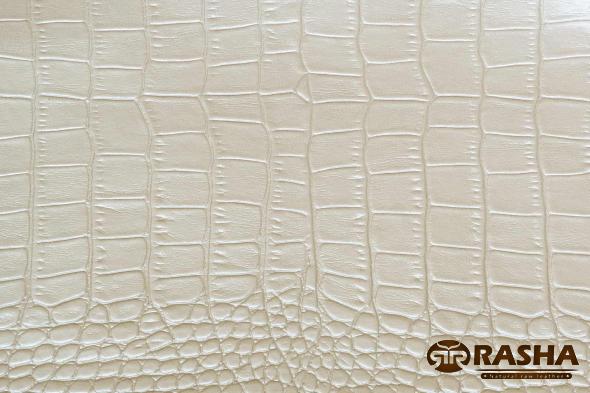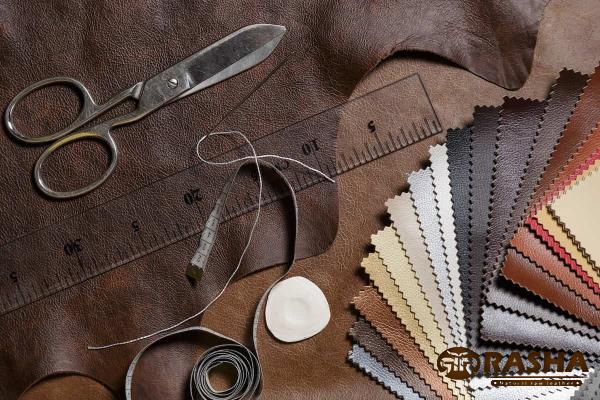Raw leather suppliers play a critical role in the leather industry by providing high-quality animal hides and skins to manufacturers across various industries. From fashion to automotive, furniture to footwear, these suppliers serve as the backbone of the leather supply chain. This article provides a comprehensive summary of the raw leather supplier industry, including key players, sourcing and production processes, quality considerations, and emerging trends. 1. Key Players in the Raw Leather Supplier Industry: The raw leather supplier industry comprises a wide range of players, including individual farmers, livestock traders, meat processors, and specialized tanneries. Large international brands often have their own sourcing arms or partnerships with specific suppliers, while smaller manufacturers rely on local or regional suppliers. Major global raw leather suppliers include JBS SA, Tyson Foods, and Cargill, among others.
leather
 2. Sourcing of Raw Leather: The sourcing of raw leather begins at livestock farms where animals, such as cattle, sheep, goats, and pigs, are raised for their hides and skins. Proper animal husbandry practices are crucial to ensure the quality and sustainability of the leather produced. Livestock traders act as intermediaries between farmers and tanneries, facilitating the purchase and transportation of animal hides and skins to tanneries. 3. Production Processes in Raw Leather Supply Chain: After the animal hides and skins reach the tanneries, the production process for raw leather typically involves several stages. These include preserving, cleaning, dehairing, and preparing the hides for the tanning process. Tanneries use various chemicals, such as chrome salts or vegetable extracts, to transform raw animal hides into preserved, durable, and supple leather. The tanning process may take several weeks, depending on the desired quality and leather type. 4. Quality Considerations: Raw leather suppliers must adhere to strict quality standards to ensure customer satisfaction and meet industry requirements.
2. Sourcing of Raw Leather: The sourcing of raw leather begins at livestock farms where animals, such as cattle, sheep, goats, and pigs, are raised for their hides and skins. Proper animal husbandry practices are crucial to ensure the quality and sustainability of the leather produced. Livestock traders act as intermediaries between farmers and tanneries, facilitating the purchase and transportation of animal hides and skins to tanneries. 3. Production Processes in Raw Leather Supply Chain: After the animal hides and skins reach the tanneries, the production process for raw leather typically involves several stages. These include preserving, cleaning, dehairing, and preparing the hides for the tanning process. Tanneries use various chemicals, such as chrome salts or vegetable extracts, to transform raw animal hides into preserved, durable, and supple leather. The tanning process may take several weeks, depending on the desired quality and leather type. 4. Quality Considerations: Raw leather suppliers must adhere to strict quality standards to ensure customer satisfaction and meet industry requirements.
Specifications of leather
 Key factors that influence leather quality include the origin of the raw materials, the animal breed, the tanning process used, and the overall manufacturing standards. Suppliers often employ quality control measures such as visual inspections, physical tests, and chemical analyses to determine the quality and suitability of the raw leather before it is sold to manufacturers. 5. Sustainability and Ethical Considerations: With growing consumer concerns regarding sustainability and animal welfare, raw leather suppliers are increasingly adopting environmentally-friendly and ethical practices. These include responsible sourcing, traceability initiatives, use of natural tanning agents, and compliance with relevant regulations. Furthermore, sustainable practices help suppliers differentiate themselves in the marketplace and attract socially-conscious customers. 6. Market Trends and Challenges: The raw leather supplier industry faces various market trends and challenges.
Key factors that influence leather quality include the origin of the raw materials, the animal breed, the tanning process used, and the overall manufacturing standards. Suppliers often employ quality control measures such as visual inspections, physical tests, and chemical analyses to determine the quality and suitability of the raw leather before it is sold to manufacturers. 5. Sustainability and Ethical Considerations: With growing consumer concerns regarding sustainability and animal welfare, raw leather suppliers are increasingly adopting environmentally-friendly and ethical practices. These include responsible sourcing, traceability initiatives, use of natural tanning agents, and compliance with relevant regulations. Furthermore, sustainable practices help suppliers differentiate themselves in the marketplace and attract socially-conscious customers. 6. Market Trends and Challenges: The raw leather supplier industry faces various market trends and challenges.
buy leather
 One significant trend is the increasing demand for exotic leather, such as crocodile, snake, or ostrich skins, which requires specialized suppliers and additional compliance measures to ensure material authenticity and sustainable sourcing. Other trends include the rise of vegan leather alternatives and the incorporation of technology and innovation in the tanning process. 7. COVID-19 Impact: Like many industries, the raw leather supplier industry has not been immune to the effects of the COVID-19 pandemic. The closures of manufacturing facilities, disruptions in global supply chains, and reduced consumer spending on luxury goods have significantly impacted the industry’s profitability. However, as economies recover and demand bounces back, the industry is expected to regain its footing. 8. Future Outlook and Conclusion: The raw leather supplier industry plays a crucial role in meeting the diverse demands of manufacturers across numerous sectors. As sustainability and ethical considerations continue to gain importance, suppliers will need to adapt and invest in responsible practices. The industry will also need to embrace technological advancements and new materials to remain competitive. Despite the challenges faced, the raw leather supplier industry is poised for growth in the long term.
One significant trend is the increasing demand for exotic leather, such as crocodile, snake, or ostrich skins, which requires specialized suppliers and additional compliance measures to ensure material authenticity and sustainable sourcing. Other trends include the rise of vegan leather alternatives and the incorporation of technology and innovation in the tanning process. 7. COVID-19 Impact: Like many industries, the raw leather supplier industry has not been immune to the effects of the COVID-19 pandemic. The closures of manufacturing facilities, disruptions in global supply chains, and reduced consumer spending on luxury goods have significantly impacted the industry’s profitability. However, as economies recover and demand bounces back, the industry is expected to regain its footing. 8. Future Outlook and Conclusion: The raw leather supplier industry plays a crucial role in meeting the diverse demands of manufacturers across numerous sectors. As sustainability and ethical considerations continue to gain importance, suppliers will need to adapt and invest in responsible practices. The industry will also need to embrace technological advancements and new materials to remain competitive. Despite the challenges faced, the raw leather supplier industry is poised for growth in the long term.










Your comment submitted.